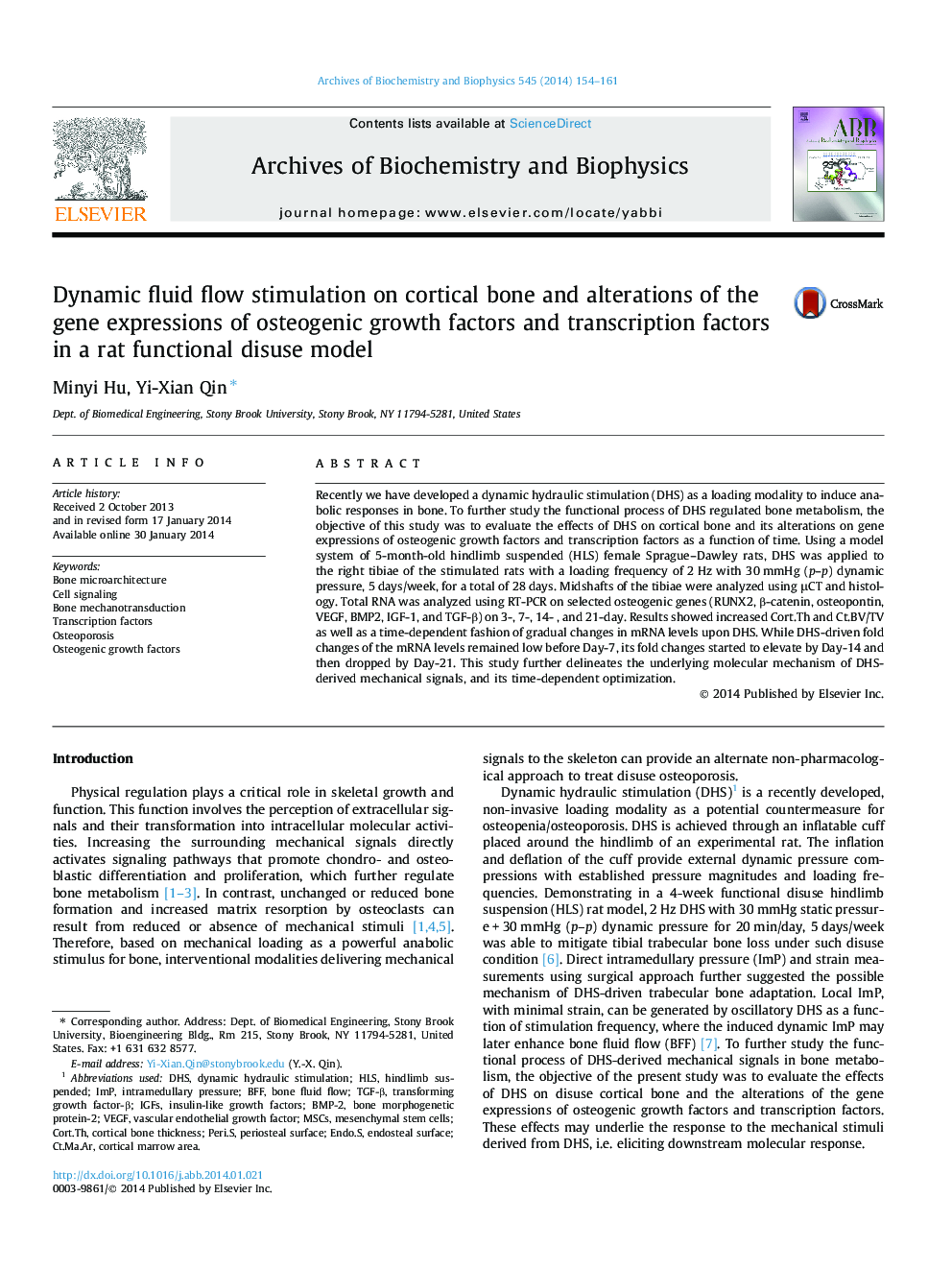| Article ID | Journal | Published Year | Pages | File Type |
|---|---|---|---|---|
| 1925263 | Archives of Biochemistry and Biophysics | 2014 | 8 Pages |
•Dynamic hydraulic stimulation (DHS) increased Cort.Th, Ct.BV/TV, and mRNA levels in a time-dependent fashion.•DHS-driven fold changes of the mRNA levels remained low before Day-7.•Fold changes of mRNA were elevated by Day-14 and then dropped by Day-21.•This study investigated the possible mechanism of DHS-derived mechanical signals.
Recently we have developed a dynamic hydraulic stimulation (DHS) as a loading modality to induce anabolic responses in bone. To further study the functional process of DHS regulated bone metabolism, the objective of this study was to evaluate the effects of DHS on cortical bone and its alterations on gene expressions of osteogenic growth factors and transcription factors as a function of time. Using a model system of 5-month-old hindlimb suspended (HLS) female Sprague–Dawley rats, DHS was applied to the right tibiae of the stimulated rats with a loading frequency of 2 Hz with 30 mmHg (p–p) dynamic pressure, 5 days/week, for a total of 28 days. Midshafts of the tibiae were analyzed using μCT and histology. Total RNA was analyzed using RT-PCR on selected osteogenic genes (RUNX2, β-catenin, osteopontin, VEGF, BMP2, IGF-1, and TGF-β) on 3-, 7-, 14- , and 21-day. Results showed increased Cort.Th and Ct.BV/TV as well as a time-dependent fashion of gradual changes in mRNA levels upon DHS. While DHS-driven fold changes of the mRNA levels remained low before Day-7, its fold changes started to elevate by Day-14 and then dropped by Day-21. This study further delineates the underlying molecular mechanism of DHS-derived mechanical signals, and its time-dependent optimization.
